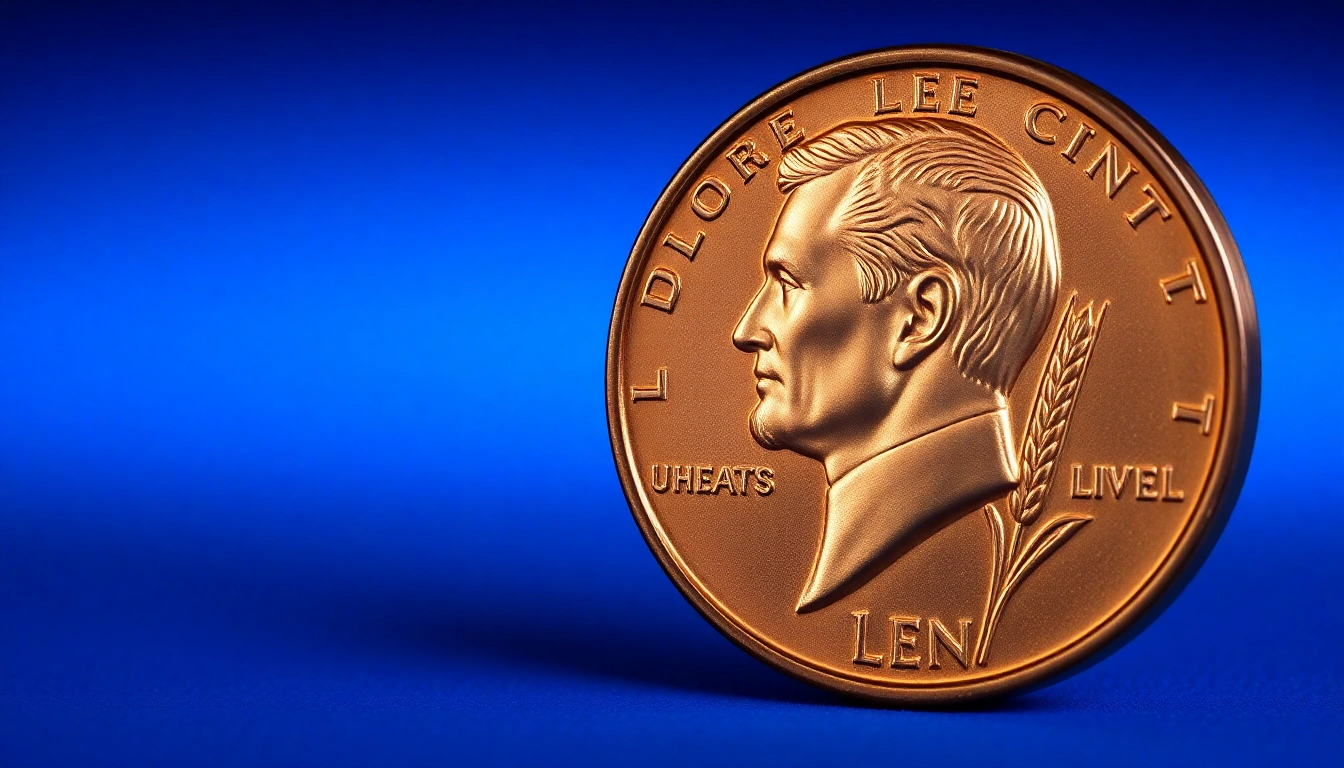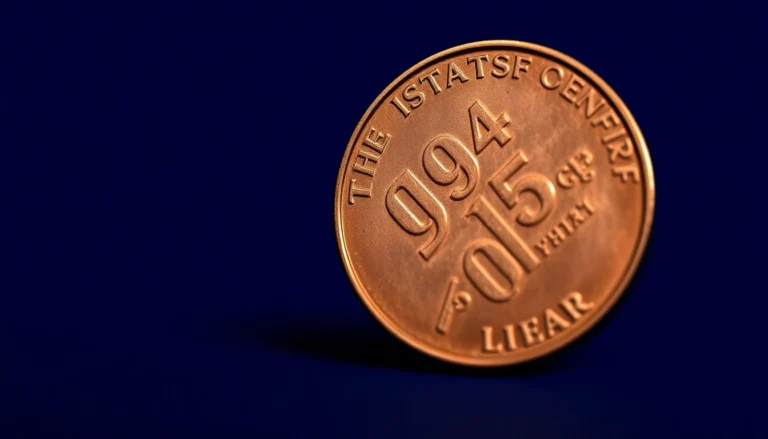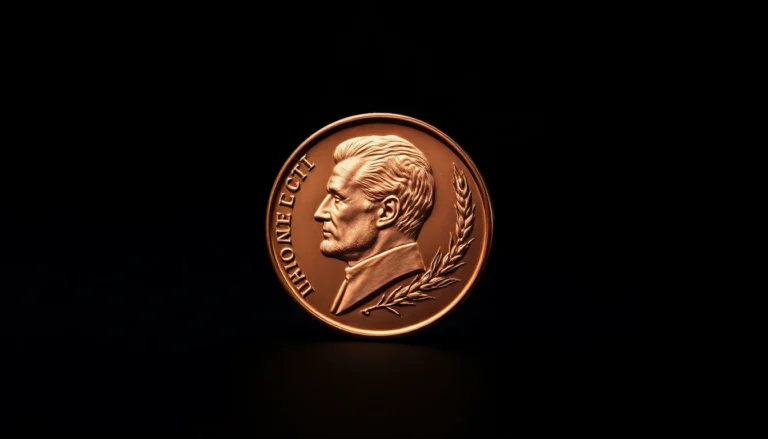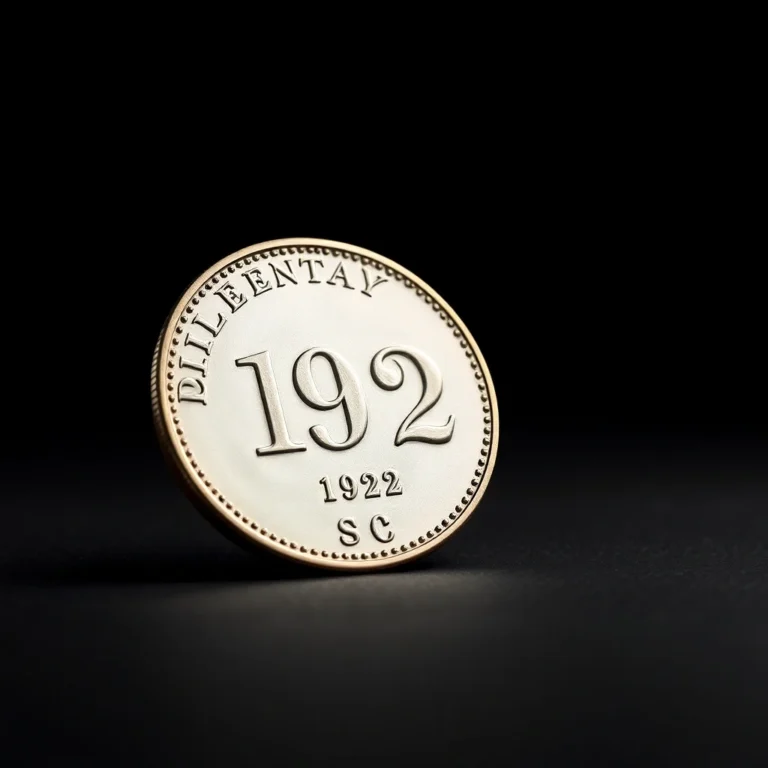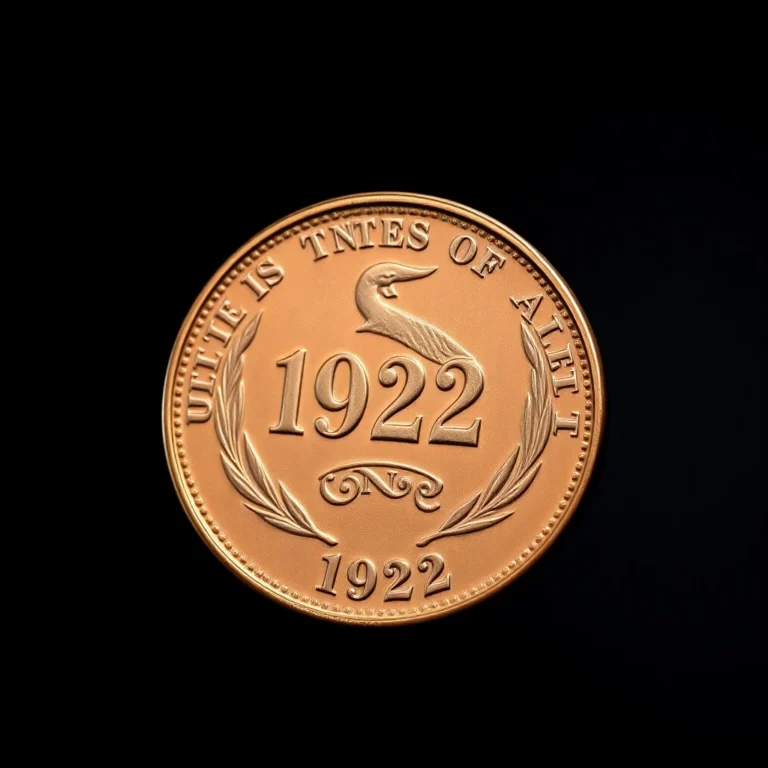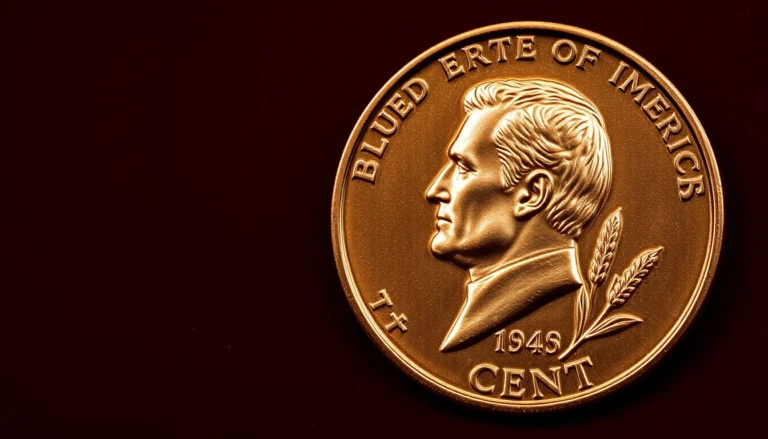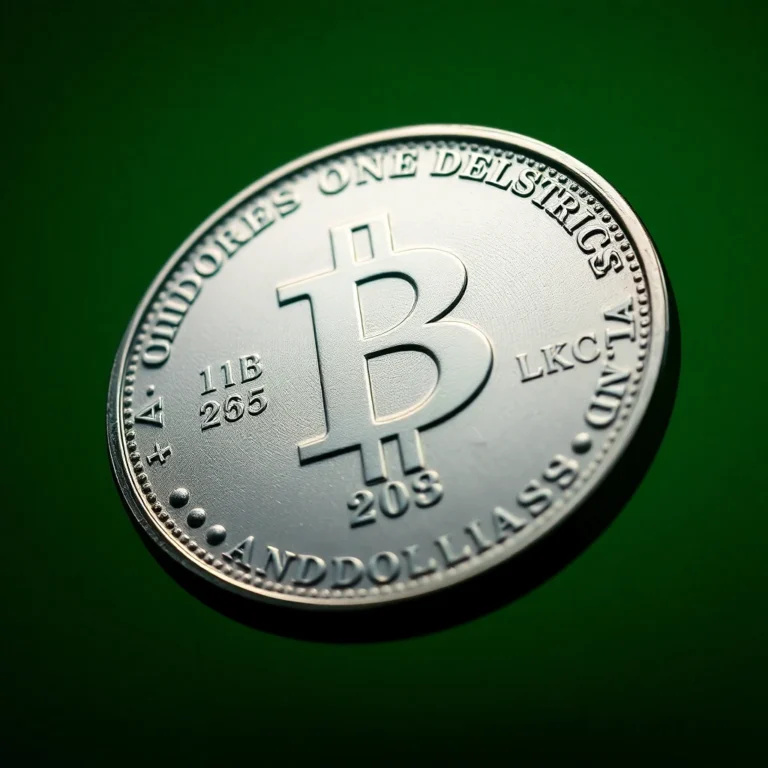Have you ever wondered if the humble penny jingling in your pocket could be worth a small fortune? For coin collectors, the Lincoln Wheat Penny series presents a tantalizing treasure hunt, with some of these seemingly ordinary coins hiding extraordinary value. As an emblem of American history and numismatic allure, Wheat Pennies have captivated collectors for decades, offering a glimpse into the past and the potential for significant financial reward.
In this article, we’ll uncover the top 5 most valuable Lincoln Wheat Pennies that have been found in circulation. You’ll learn the stories behind these rare finds, why they command such high prices, and how you might spot one in your own change. Whether you’re a seasoned collector or just beginning your journey, these coins offer a fascinating insight into the world of numismatics.
Prepare to delve into the stories of rarity and worth that make these pennies so coveted. Could one of these valuable five be hiding in your collection? Let’s find out!
1. 1909-S VDB Lincoln Wheat Penny
The 1909-S VDB Lincoln Wheat Penny is a legendary coin among numismatists, celebrated for its historical significance and rarity. This coin marks the beginning of the Lincoln cent series, introduced to commemorate the centennial of Abraham Lincoln’s birth. The “S” denotes its San Francisco mint origin, while “VDB” refers to the initials of the coin’s designer, Victor David Brenner. 🪙
This penny is distinguished by the small “S” mint mark below the date on the obverse and the “VDB” initials on the reverse, at the bottom near the rim. Collectors treasure this particular coin, as only 484,000 were minted before the “VDB” initials were controversially removed due to public disapproval. The scarcity of these coins, especially in higher grades, makes them a coveted find.
| Grade | Value Range |
|---|---|
| Good (G-4) | $700-$900 |
| Very Good (VG-8) | $900-$1,200 |
| Fine (F-12) | $1,200-$1,600 |
| Very Fine (VF-20) | $1,600-$2,000 |
| Extremely Fine (EF-40) | $2,000-$3,000 |
| About Uncirculated (AU-50) | $3,000-$5,000 |
| Mint State (MS-60) | $5,000-$6,500 |
| Gem Mint State (MS-65) | $6,500-$10,000+ |
2. 1914-D Lincoln Wheat Penny
The 1914-D Lincoln Wheat Penny is a prized treasure among numismatists, often referred to as the “King of Wheat Pennies.” Minted in Denver, this coin is renowned for its rarity and historical significance. With World War I in full swing, the Denver Mint produced only 1,193,000 of these pennies, making it one of the lowest mintage coins in the Lincoln series. This scarcity is a key driver of its desirability and high value today. 🪙
The 1914-D can be identified by the ‘D’ mintmark located below the date on the obverse side of the coin. Collectors should be cautious of counterfeits, which often feature altered dates or added mintmarks. No major varieties or errors are associated with this year, but its rarity and condition greatly influence its market value.
| Grade | Value Range |
|---|---|
| Good (G-4) | $200-$300 |
| Very Good (VG-8) | $350-$500 |
| Fine (F-12) | $550-$700 |
| Very Fine (VF-20) | $800-$1,000 |
| Extremely Fine (EF-40) | $1,200-$1,500 |
| About Uncirculated (AU-50) | $2,000-$3,000 |
| Mint State (MS-60) | $4,000-$5,500 |
| Gem Mint State (MS-65) | $10,000-$15,000 |
3. 1922 No D Lincoln Wheat Penny
The 1922 No D Lincoln Wheat Penny is a captivating numismatic treasure, steeped in history and intrigue. Unlike other coins in the Lincoln series, this penny was minted in Denver without the customary “D” mint mark due to a die error. This rarity occurred when the Denver Mint produced all Lincoln Cents for 1922, and the mint mark was inadvertently omitted on some coins, creating a prized error coin highly sought after by collectors. 🪙
Identifying a genuine 1922 No D penny requires careful examination. Key features include a weakly struck obverse with a worn appearance, particularly on Lincoln’s face and the date. The reverse should display strong wheat stalks, a distinguishing factor from other worn coins of the era.
Here is a table of current market values for the 1922 No D Lincoln Wheat Penny:
| Grade | Value Range |
|---|---|
| Good (G-4) | $500-$700 |
| Very Good (VG-8) | $800-$1,200 |
| Fine (F-12) | $1,500-$2,000 |
| Very Fine (VF-20) | $2,500-$3,000 |
| Extremely Fine (EF-40) | $4,000-$5,000 |
| About Uncirculated (AU-50) | $6,000-$8,000 |
| Mint State (MS-60) | $10,000-$15,000 |
| Gem Mint State (MS-65) | $30,000-$45,000 |
4. 1931-S Lincoln Wheat Penny
The 1931-S Lincoln Wheat Penny is a standout in the world of coin collecting, both for its historical significance and its allure to collectors. Minted during the Great Depression, the 1931-S penny is a symbol of resilience and rare opportunity in a time of economic hardship. With a low mintage of just 866,000, it stands as one of the scarcest Lincoln Wheat Pennies, making it a coveted find for any numismatist.
Key identifying features of the 1931-S penny include the iconic wheat ears on the reverse and the ‘S’ mintmark beneath the date on the obverse. While there are no significant known varieties or errors for this year, the coin’s rarity ensures its desirability. Its scarcity in high grades further enhances its value.
| Grade | Value Range |
|---|---|
| Good (G-4) | $70-$80 |
| Very Good (VG-8) | $85-$100 |
| Fine (F-12) | $120-$150 |
| Very Fine (VF-20) | $200-$250 |
| Extremely Fine (EF-40) | $300-$400 |
| About Uncirculated (AU-50) | $450-$550 |
| Mint State (MS-60) | $600-$750 |
| Gem Mint State (MS-65) | $1,200-$1,500 |
5. 1943 Copper Lincoln Wheat Penny
The 1943 Copper Lincoln Wheat Penny is one of the most legendary coins in U.S. numismatics. During World War II, copper was needed for the war effort, leading the U.S. Mint to produce pennies using zinc-coated steel. However, a few copper planchets were mistakenly used, resulting in the rare 1943 copper cents. These coins are incredibly sought after and valuable, captivating collectors with their intriguing history and rarity. 🪙
To identify a 1943 Copper Penny, look for the signature wheat ears on the reverse and the year “1943” on the obverse. The coin will have a copper color rather than the grayish hue of the steel cent. Be cautious of counterfeits, often created by coating steel cents with copper or altering the date. Authentic examples are extremely rare, with only a few dozen known to exist.
| Grade | Value Range |
|---|---|
| Good (G-4) | $60,000-$85,000 |
| Very Good (VG-8) | $100,000-$125,000 |
| Fine (F-12) | $150,000-$175,000 |
| Very Fine (VF-20) | $200,000-$250,000 |
| Extremely Fine (EF-40) | $300,000-$350,000 |
| About Uncirculated (AU-50) | $375,000-$400,000 |
| Mint State (MS-60) | $500,000-$600,000 |
| Gem Mint State (MS-65) | $700,000-$1,000,000 |
In our exploration of the top five most valuable Lincoln Wheat Pennies, we unveiled the allure of coins like the elusive 1909-S VDB and the revered 1914-D, each with its own captivating story. The 1922 no D, the 1931-S, and the scarce 1955 doubled die also showcased their rarity and significance. As you embark on your collecting journey, remember to examine your coins under good light and invest in a magnifying glass to spot those subtle yet valuable minting errors.
The current market trend reveals a growing interest in numismatics, with Lincoln Wheat Pennies maintaining robust value appreciation due to their historical significance. As you delve into the world of coin collecting, embrace the thrill of discovery and the rich tapestry of history each coin represents. Let each find be a reminder that even the smallest treasures can hold immense value, inspiring a lifelong passion for numismatics.
FAQs
What factors determine the value and grading of a Lincoln Wheat Penny?
The value of a Lincoln Wheat Penny is influenced by its rarity, condition, and demand among collectors. Grading assesses the coin’s physical state, from Mint State (MS) for uncirculated coins to lower grades like Good (G) for those with considerable wear. Key dates and mint marks also significantly impact value, so it’s crucial to consider these when evaluating your pennies.
How can I authenticate my Lincoln Wheat Pennies to ensure they are genuine?
Authenticating your Lincoln Wheat Pennies involves checking for consistent weight, diameter, and thickness, as genuine coins should closely match standard specifications. Look for signs of wear appropriate for the coin’s age and examine the design details, such as the wheat ears and Lincoln’s portrait, to ensure they are sharp and consistent with known genuine examples. Consulting a reputable coin dealer or using a third-party grading service can provide additional verification.
What advice do you have for someone starting to collect Lincoln Wheat Pennies?
Begin by focusing on affordable coins in good condition to build a foundational collection. Learn about key dates, mint marks, and varieties to prioritize your searches. Use resources like coin guides and online forums to educate yourself about market trends and values. Joining a local coin club can also provide networking opportunities and valuable insights from experienced collectors.
Why are Lincoln Wheat Pennies considered historically significant?
Lincoln Wheat Pennies, minted from 1909 to 1958, are significant for featuring the first portrait of a U.S. president on a circulating coin. Designed by Victor D. Brenner, the penny commemorates Abraham Lincoln’s 100th birthday and reflects a shift in American coinage towards honoring historical figures. The coin’s long production run and various design changes tell a rich story of 20th-century American history.
What are some common varieties or errors to look for in Lincoln Wheat Pennies?
Collectors often seek out varieties such as the 1922 “No D” penny, which lacks a visible mint mark due to a worn die, and the 1955 Doubled Die, where doubling is evident on the obverse. Other errors include off-center strikes and die cracks. These varieties and errors can significantly increase a coin’s value and appeal to collectors, making them exciting finds in circulation.
